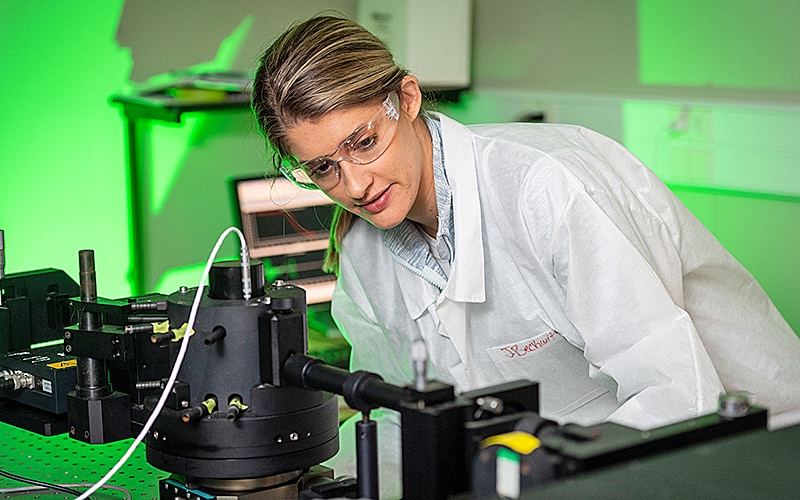Polymers and Complex Fluids

Polymers are ubiquitous in modern life, as are complex fluids – soft materials with properties between those of liquids and solids. Researchers in the Chemical Engineering Department are developing polymer films for use in energy conversion, new polymers for flexible solar cells, membranes and medical devices, and polymer coatings that change properties when exposed to stimuli. The research in this area includes rheology studies, molecular simulation, colloid self-assembly, gelation and percolation.
Xiwen Gong
The Gong research group studies the mechanic, electronic, and optical properties of polymer semiconductors and polymer-based composites. We employ a variety of advanced spectroscopic techniques to study complex systems of soft semiconductors. Through building structure-property relationships, we aim to provide guidelines to the future rational design of the soft semiconducting materials with superior properties.
Jovan Kamcev
Professor Kamcev and his research group seek to understand how polymer structure influences transport of small molecules through polymeric materials for water treatment and energy storage/generation applications.
Joerg Lahann
Professor Joerg Lahann’s research interest is focused on the development of active, multi-functional bio-interfaces, which are applicable to a range of biomedical applications. His group’s recent advances in the molecular design of active nanostructures include the introduction of reactive coatings, reversibly switching surfaces and anisotropic nanoparticles that support the vision of smart interfaces and act as templates in time-controlled surface interactions.
Ronald Larson
Professor Ronald Larson and his group study polymer rheology through experiment, theory and simulation. The team is also developing colloidal materials that self assemble and can be reconfigured on command or in response to environmental signals to form novel optical and electronic materials. Using molecular dynamics methods, the Larson Group also simulates surfactant structures and properties.
Claudia Loebel
The Loebel lab aims to understand how macromer chemistry and structure such as type and number of functional groups, influences the physical properties of polymerized hydrogels. Applications include the fabrication of cell culture platforms to probe biological questions in vitro and towards controlled delivery of cells or therapeutic molecules in vivo.
Jouha Min
Michael Solomon
Professor Michael Solomon and his research group investigate complex fluids—soft materials with properties intermediate between fluids and solids. Solomon’s current interests include nanocolloidal assembly, colloidal gelation, and the biomechanics of bacterial biofilms. Applications that interest the group include creating new optical materials, sensors, biomedical devices and procedures, as well as materials for energy management.
Peter Tessier
Professor Peter Tessier and his group aim to develop next generation technologies for designing, discovering, engineering, characterizing, formulating and delivering monoclonal antibodies and other biologics for molecular imaging, diagnostic and therapeutic applications. Their research in the area of complex fluids involves the use of experimental and computational approaches for understanding molecular determinants of protein solution properties (solubility, viscosity, aggregation) and other key protein properties (stability, specificity and affinity). With an eye toward applications, the Tessier lab also develops novel high-throughput screening tools for discovering new biologics and identifying rare variants with drug-like properties for therapeutic applications.
Anish Tuteja
Professor Anish Tuteja and his group use polymers to address key challenges in the areas of renewable energy and environmental science. They develop super oil-repellent surfaces, super water-repellent surfaces, ice-repellent surfaces, membranes and polymer nanocomposites. Applications include the separation of oil and water and energy-conversion materials for solar cells.
The Polymers, Surfaces and Interactions (ψ) Group
Robert Ziff
Professor Robert Ziff and his colleagues use computer simulation and mathematical modeling to study a variety of problems of interest to fields of chemical engineering, mathematics, and physics. The percolation model is used to study such phenomena as flow through porous media, conductivity of composites such as nano-tubules, polymer gelation and growth of the giant component in networked systems. We have developed several numerical algorithms to obtain precise critical connectivity thresholds for two and three-dimensional systems, and have identified several universal properties of the critical percolation “fractal.”